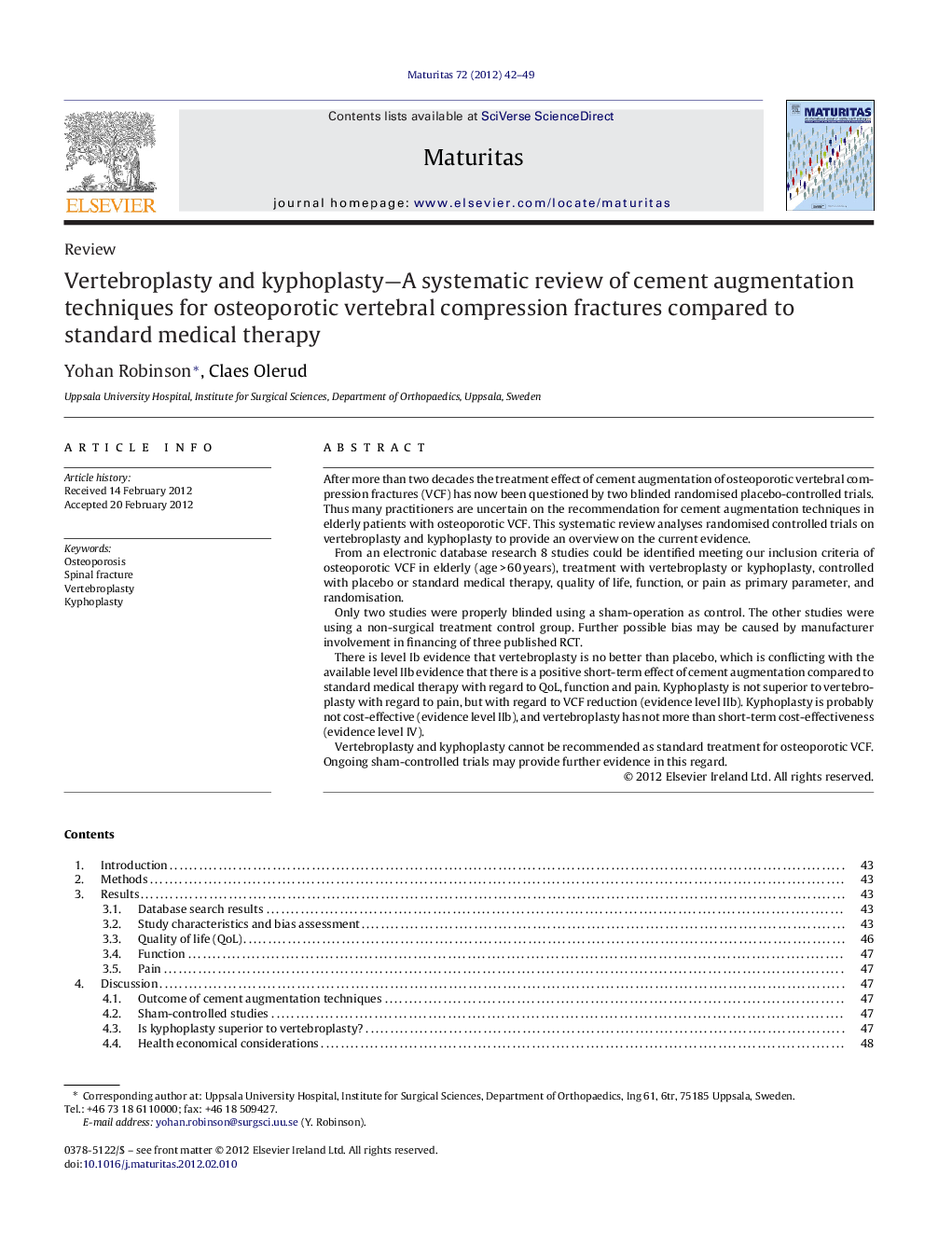| Article ID | Journal | Published Year | Pages | File Type |
|---|---|---|---|---|
| 1917664 | Maturitas | 2012 | 8 Pages |
After more than two decades the treatment effect of cement augmentation of osteoporotic vertebral compression fractures (VCF) has now been questioned by two blinded randomised placebo-controlled trials. Thus many practitioners are uncertain on the recommendation for cement augmentation techniques in elderly patients with osteoporotic VCF. This systematic review analyses randomised controlled trials on vertebroplasty and kyphoplasty to provide an overview on the current evidence.From an electronic database research 8 studies could be identified meeting our inclusion criteria of osteoporotic VCF in elderly (age > 60 years), treatment with vertebroplasty or kyphoplasty, controlled with placebo or standard medical therapy, quality of life, function, or pain as primary parameter, and randomisation.Only two studies were properly blinded using a sham-operation as control. The other studies were using a non-surgical treatment control group. Further possible bias may be caused by manufacturer involvement in financing of three published RCT.There is level Ib evidence that vertebroplasty is no better than placebo, which is conflicting with the available level IIb evidence that there is a positive short-term effect of cement augmentation compared to standard medical therapy with regard to QoL, function and pain. Kyphoplasty is not superior to vertebroplasty with regard to pain, but with regard to VCF reduction (evidence level IIb). Kyphoplasty is probably not cost-effective (evidence level IIb), and vertebroplasty has not more than short-term cost-effectiveness (evidence level IV).Vertebroplasty and kyphoplasty cannot be recommended as standard treatment for osteoporotic VCF. Ongoing sham-controlled trials may provide further evidence in this regard.
